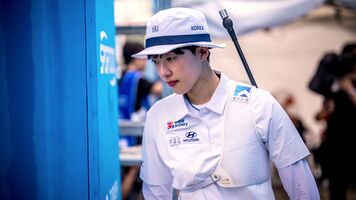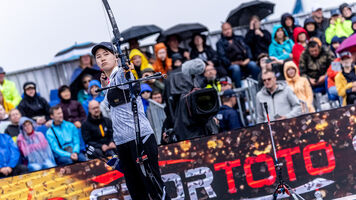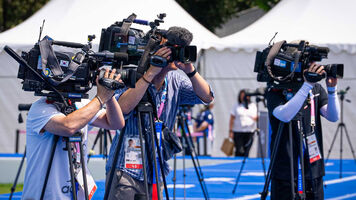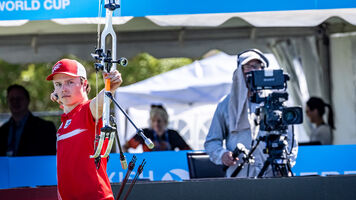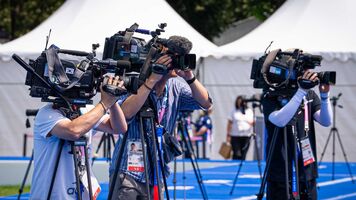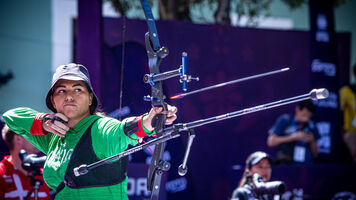An innovative remote future fuelling archery’s broadcast growth
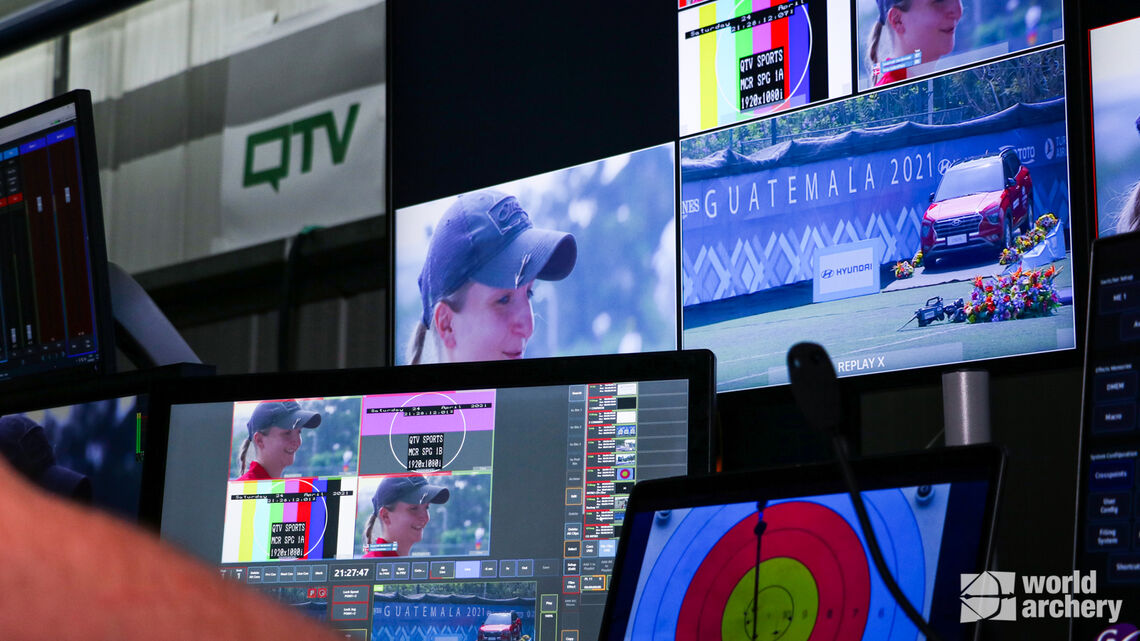
The pandemic has left an indelible mark on the world and sport did not escape the impact.
Travel restrictions and health concerns caused the cancellation of archery’s entire international season in 2020. And it meant that sports organisations had to think creatively when preparing for a return to the competition field.
It was key to provide safe, secure and world-class events for athletes – and fans – once again.
But the logistical challenges in hosting events internationally had only increased.
Any opportunity to reduce risk, financially or operationally, was essential. And that’s why World Archery and broadcast partner QTV invested heavily in a remote production model for the sport’s television coverage.
At its core, ‘remote production’ simply means moving core broadcast functions off-site.
The evolution began with the Lockdown Knockout, hosted during the height of the pandemic.
Archers competed against each other completely remotely by dialling in video calls with their mobile phones. Mixing the signals, adding graphics and commentary, and editing the footage into highlights afterwards all took place in different locations.
It wasn’t perfect but, with the sport entirely stopped, it was something.
So how could the same approach be applied to normal events?
Some productions, particularly those held in permanent venues, can move completely remotely. Everything, including the mixing of cameras, takes place off-site. This requires the transmission of numerous video feeds, which can be very expensive.
But there are still huge benefits in using the remote principle without going all the way.
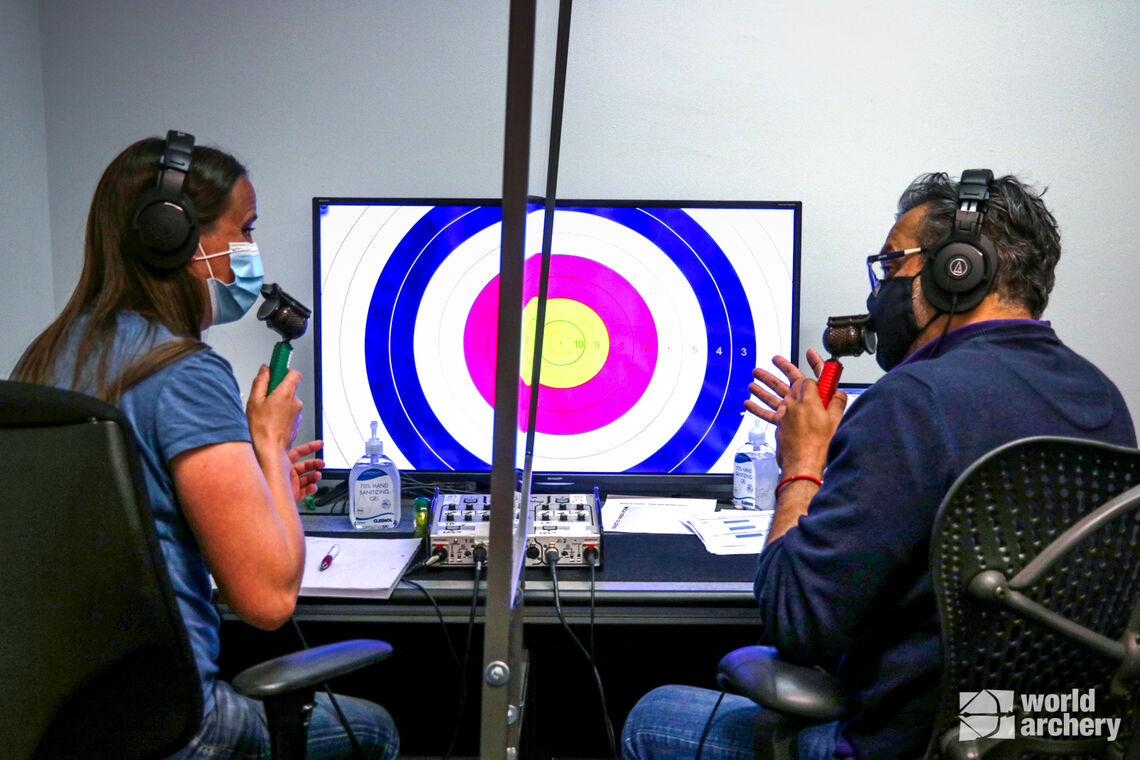
Commentators Nicky Hunt and Karim Bashir add expertise remotely.
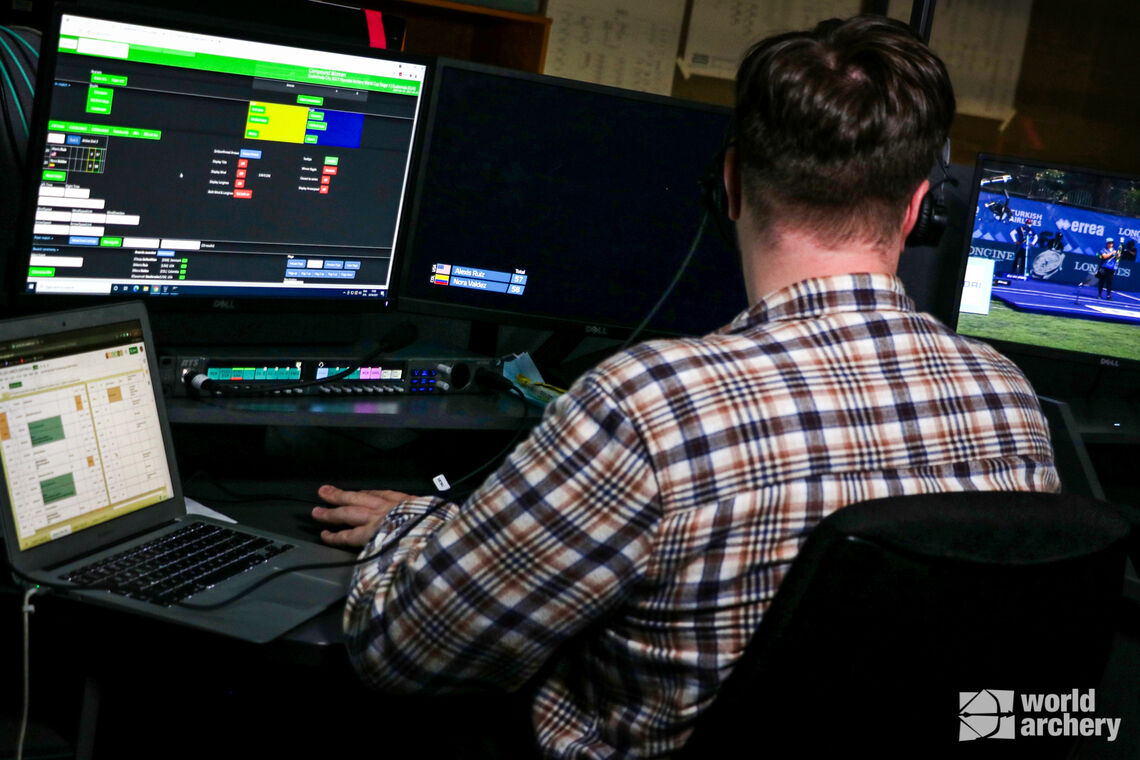
Adding live production graphics to a broadcast feed remotely.
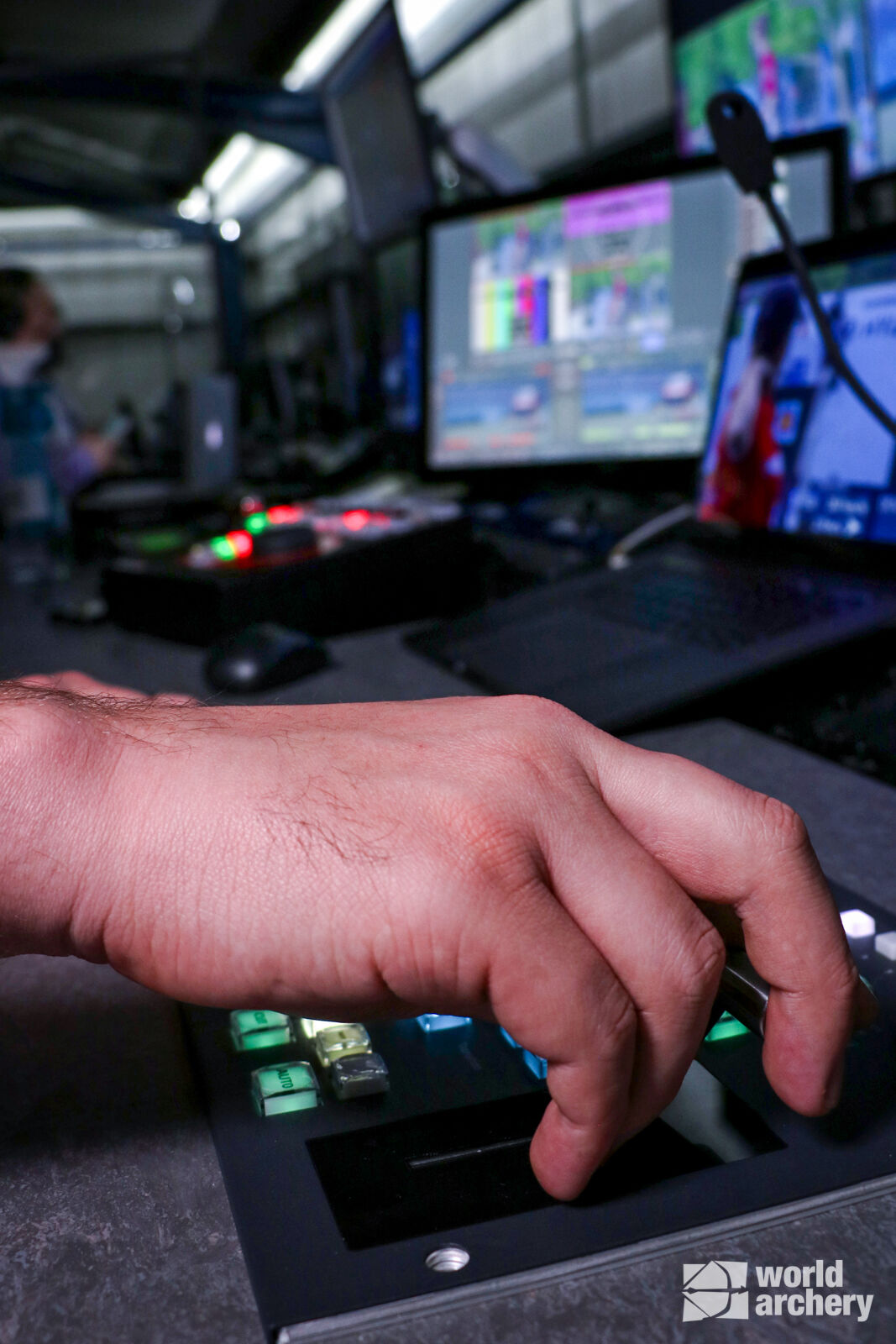
Mixing additional content with the on-site feed from the remote base.
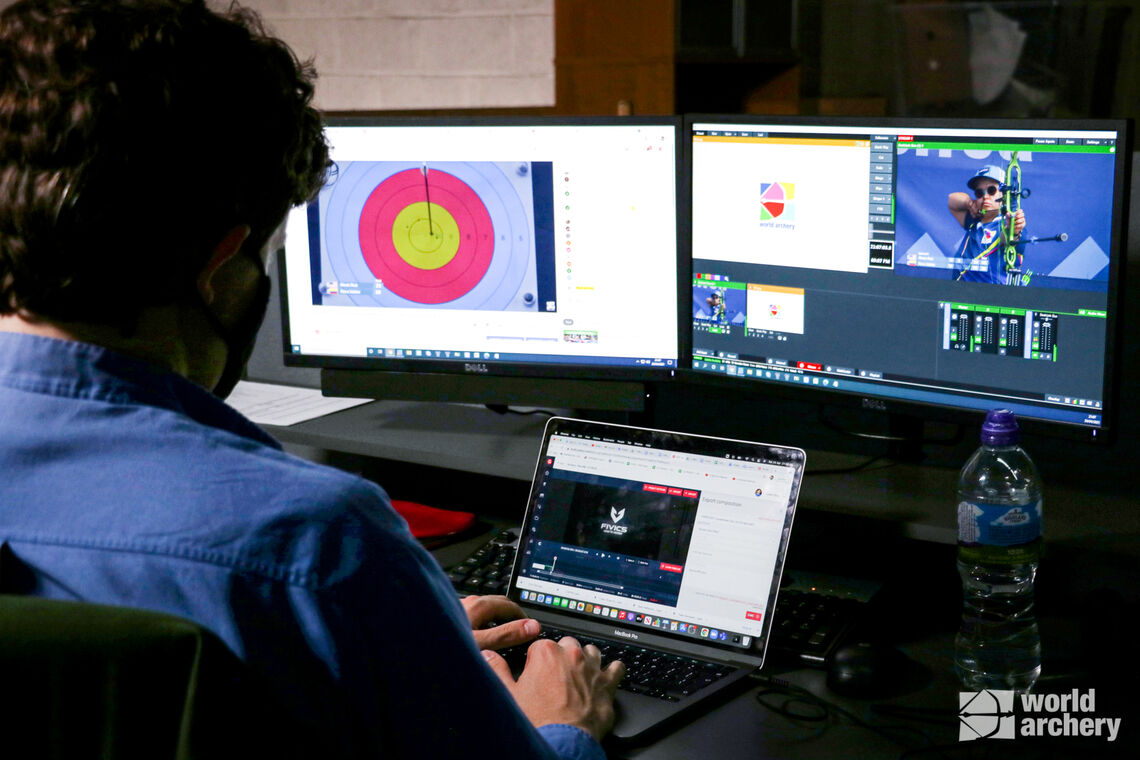
Social media clipping live and remote from Scotland during an event in Guatemala.
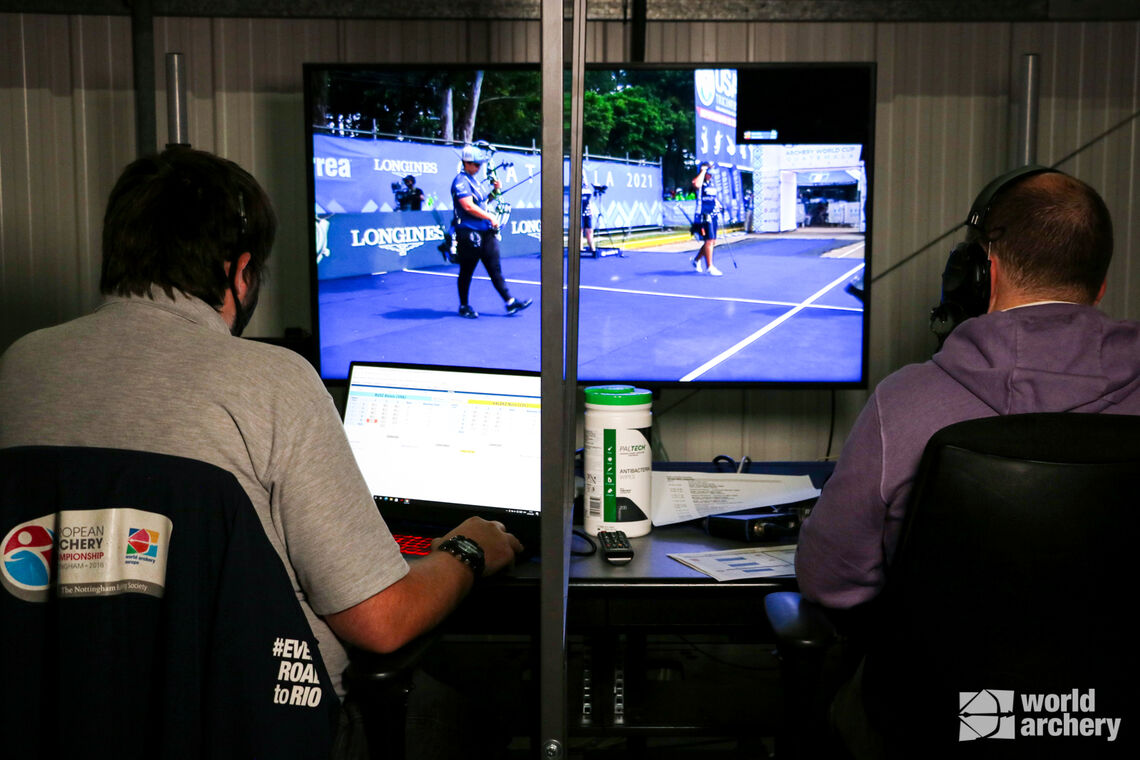
The remote results technician and world feed producer monitor a live feed.
The approach deployed by World Archery for international events in 2021 might best be described as hybrid remote.
Cameras, microphones and mixing both remained on-site.
Everything else, including commentary, graphics, playout, world feed production, the editing of news and highlights, social clipping and the producer, who’s ultimately responsible for the broadcast output, moved off-site.
Instead of travelling a core group around the world, a single on-site producer-director implemented a new broadcast system with purely local crews.
What started as an essential change caused by the pandemic proved cheaper, better and more sustainable, while arguably delivering a better all-round product for the sport’s fans.
And the ability to pair the off-site expertise with a remote feed from any event is going to result in more hours of archery broadcast at greater quality.
Despite the challenges in 2021, and some major international teams (like China, Korea and Chinese Taipei) choosing to forego the Hyundai Archery World Cup, archery’s average per-event broadcast reach increased by 11% in key markets.
Across all media, the final Olympic qualifier and third stage of the Hyundai Archery World Cup in Paris reached more than 400 million people according to an independent report by IRIS.
Archery’s audience reports from the Games in Tokyo were equally as positive.
The sport delivered record figures in key growth markets like India and Mexico, while continuing to perform well in traditionally strong regions like China and Korea.
Like Rio and London before, the sport received high interest scores from the public – particularly from young people.
And during the summer, World Archery was one of the most engaging sports content providers on social media, gaining more attention on YouTube than any other international federation during the Olympics.
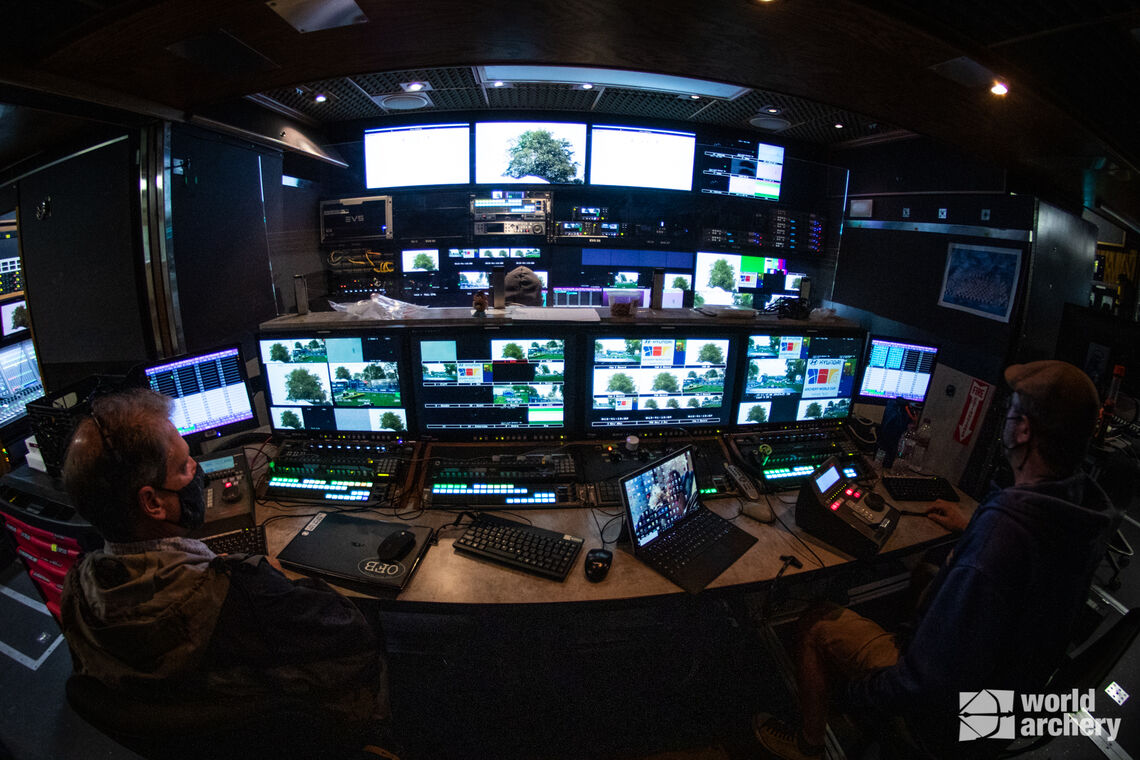
Archery’s innovative remote production model is here to stay.
A long-term commitment to the approach means an investment in the kind of technology that will allow the return of live timing to the screen, even when added remotely.
It means continued work on the broadcast system and procedures that will ensure consistency and quality, despite a variety of equipment, locations and personnel.
And it means time spent training and growing the editorial expertise of industry professionals.
It also means that the sport is better set up to deliver more high-quality content for its audience, greater exposure for sponsors and a healthy future for its international coverage.
World Archery President Prof Dr Ugur Erdener said: “Archery has a history of innovation. Whether inspired by necessity or a desire to evolve or both, this sport’s willingness to be at the forefront of positive change is key to its continued growth.”



